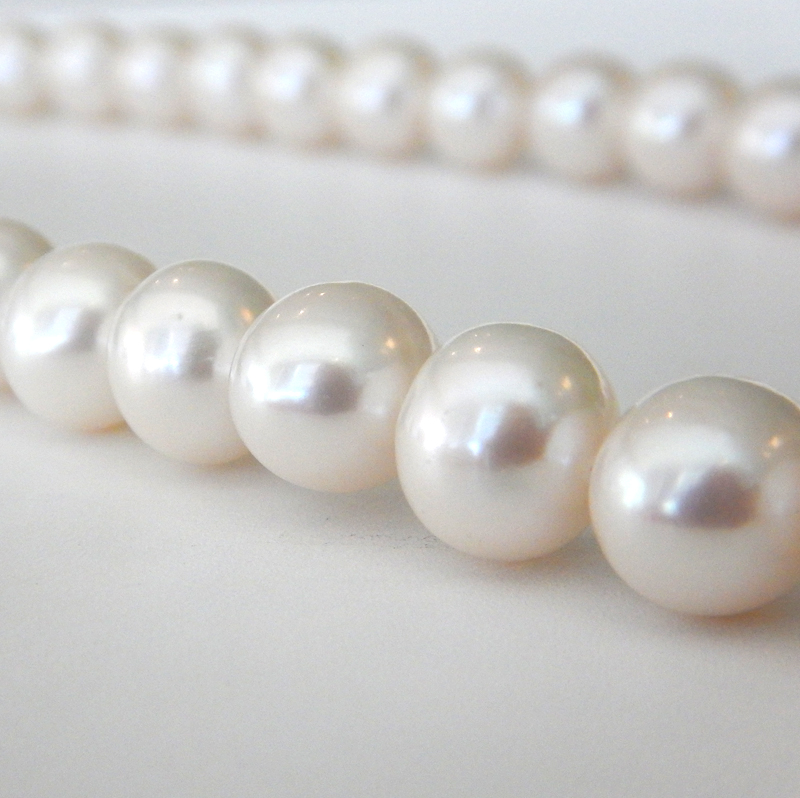Generally the least expensive variety of pearls, freshwater pearls can be found in a variety of different shapes, sizes, and colors. Here’s everything you need to know about these beautiful pearls.
- In 1924, the first whole freshwater pearls were harvested in Japan’s Lake Biwa.
- Freshwater pearls can form in two different ways. In the traditional method, a small piece of donor tissue is inserted into a mussel’s mantle. The mussel then secretes protective layers around the donor tissue to create the pearl we know and love today. The other method used to culture pearls involves replacing the donor tissue with a bead or another similar object. This method tends to form larger sized pearls, which is one reason it’s commonly used by many pearl farmers today.
- Once a donor tissue or bead is inserted into a mussel, the mussel is returned back into the water for anywhere from one to seven years. The longer the shells remain in the water, the larger the pearl will get. Pearl farmers determine how long they want to keep the mussel in the water by looking at current pearl market demand and pricing.
- Like their name implies, freshwater pearl mollusks can be found in slow-moving fresh bodies of water, including the Mississippi River. Other notable locations for freshwater pearl mollusks include the Rio Concho river in Texas and the River Tay in Scotland, both of which are known for having mussels that create extraordinary freshwater pearls.
- There are thousands of different varieties of freshwater mussels. These different varieties determine a pearl’s color. Freshwater pearls can be found in various colors, including white, pink, purple, bronze, green, and turquoise.
- Soon after hatching, baby mussels attach themselves to the gills of a certain type of carp, which they use to feed. After a couple weeks, the baby mussels detach themselves from the carp and float down to the bottom of the lake, pond, or river, where they are then gathered by pearl farmers.
- Luster is typically the most important factor when determining a cultured pearl’s value. However, this isn’t the case with freshwater pearls grown from a bead instead of donor tissue. Even though luster is still important, color intensity and size matter more when determining the value of a single beaded freshwater pearl.
- By the turn of the twenty-first century, China had monopolized freshwater pearl production. To this day, China produces nearly 100 percent of the cultured freshwater pearls available on the market. So if you own any freshwater pearl jewelry, there’s a very good chance that your pearls originated from farms located in China.
- With freshwater pearls, you tend to see more families owning their own pearl farms. Unlike saltwater farming operations, where farmers have to invest in costly equipment (e.g. specialized rafts, boats, baskets, and buoys), freshwater pearl farmers use innovative, less expensive equipment (e.g. bamboo sticks, ropes, and empty soda bottles for buoys). Many of these small, family owned farms consist of only a small pond with a few nets of several hundred shells. These operations can be compared to small agricultural operations. When pearl prices are high, families farm pearls. When pearl prices drop, they may switch to farming rice.
To shop Kloiber Jewelers’ collection of freshwater pearl jewelry, click here and learn more about the three other main pearl types: akoya, Tahitian, and South Sea.


